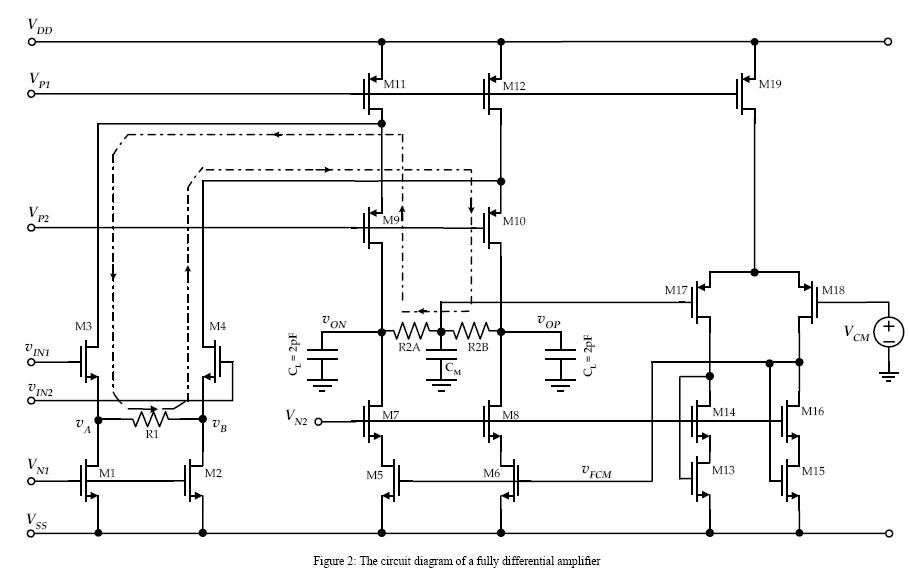joe_sg
Newbie level 1

hi all
the following circuit is a fully differential folded-cascode op-amp with CMFB.
there is some slight difference with those i have seen on other site.
There is a resistor R1 below the input differential pair, R2A and R2B are used to average the output (Vop and Von). the CMFB circuit compares the average output
with input Vcm and generates feedback Vfcm to control the biasing current
of the output stage.
What is the purpose of R1 , R2A and R2B? how do they affect the differential
gain (Av), unity gain frequency and power? if possible, how to derive the Av
from the circuit? Thanks
https://obrazki.elektroda.pl/84_1161162783.JPG

the following circuit is a fully differential folded-cascode op-amp with CMFB.
there is some slight difference with those i have seen on other site.
There is a resistor R1 below the input differential pair, R2A and R2B are used to average the output (Vop and Von). the CMFB circuit compares the average output
with input Vcm and generates feedback Vfcm to control the biasing current
of the output stage.
What is the purpose of R1 , R2A and R2B? how do they affect the differential
gain (Av), unity gain frequency and power? if possible, how to derive the Av
from the circuit? Thanks
https://obrazki.elektroda.pl/84_1161162783.JPG




